(CORRECTED ITEM) RAUL MALFAVON, 23, of Ray’s Road, Philo, was found dead Thursday morning about 6. Malfavon, an unmarried single man with a girlfriend, is assumed to have hanged himself.
========================================================
UNCONFIRMED, but it seems that the new County Courthouse is back on track. Funding for the indefensible project has been on again, off again, but is on again for now.
ASIDE from its mega-eyesore dimensions, and I say this sight unseen but on the basis of the now abandoned Willits Courthouse, the new structure will house only judges and their immediate ancillary staff. Everyone else conveniently now housed in the existing Courthouse will stay where they are, and these people include the DA and the court clerks. Since only their majesties will enjoy their new quarters, everyone else involved in the court process will have to hump their files two long blocks up and down Perkins.
AND IT’S A CORRUPTED project out of the box, with the well-connected buying up the properties adjoining the proposed new Courthouse where it may be located on the south side of Perkins Street near the old railroad depot. The vultures, who of course include lawyers, hope to lease back office space to the County at the usual inflated rents the County pays.
THE RUBES pushing the thing cite the big shot architectural firm doing the design, as if the big boys won’t simply go to Plan Draw Neo-Totalitarian for the usual glass and steel high rise security bunker. We won’t get a building that will lift Ukiah’s spirits, set the whole County’s heart singing at its splendor; we’ll get a version of the Willits monstrosity, a structure so hideous you can feel your life force flee just walking past it.
![WillitsJusticeCenter2]() ANOTHER ARGUMENT for the new Courthouse emphasized by the rubes is handicapped access. “O the poor dears. They have such a terrible time getting up to the courtrooms upstairs.” As if lifting a wheelchair-bound person up to the third floor of the present building is completely beyond all known engineering abilities.
ANOTHER ARGUMENT for the new Courthouse emphasized by the rubes is handicapped access. “O the poor dears. They have such a terrible time getting up to the courtrooms upstairs.” As if lifting a wheelchair-bound person up to the third floor of the present building is completely beyond all known engineering abilities.
THEY ALSO CITE “security.” The catch of the day, plus the occasional wild man, is shuffled from the County Jail van across a few feet of sidewalk and on into the Courthouse. The catch of the day is brought in in cuffs and belly and ankle chains, the occasional tough guy in cuffs and chains accompanied by three or four jailers. Years ago a killer’s mother tried to hand her son a gun as he was being hustled into the Courthouse off the public sidewalk. She was unsuccessful. That’s it. That one close call. But the judges have pointed at it ever since.
WHAT THE JUDGES haven’t pointed out but have pointedly ignored, is the plain fact that a lot of the shuffling of inmates from the Jail to the Courthouse and back again is totally unnecessary if the judges would hold most of the preliminary stuff out at the Jail itself, thus saving the time and transportation expense of shuffling people back and forth.
THE PRESENT COURTHOUSE is perfectly, well, imperfectly, suitable for processing low-income Americans in and out of jail. No need for a new process center.
========================================================
(UPDATED ITEM) FIREFIGHTERS, led by the Anderson Valley Volunteers, managed to knock down a wind-driven fire last Tuesday afternoon (June 4) at the Burger Ranch, Yorkville, before the fire reached several highly flammable wood construction outbuildings. The blaze was completely under control by 5pm after burning through over two acres of grasslands. The fire wa on the south side of Highway 128 on the Burger Ranch about a mile west of the Yorkville Post Office/Fire Station. It started near the house and burned up the north facing slope in grass and hardwood. A trailer, two out buildings and the residence were briefly threatened but in the end there was no damage to those structures. CalFire air tankers dropped retardant on the head of the fire and stopped the uphill progress and combined CalFire/Anderson Valley Volunteer crews contained and extinguished it.
========================================================
ON MAY 31, 2013, at 1am the Sheriff’s Office was advised that a 16-year-old female had been attacked by an unknown male adult while walking to a relative’s residence on Concow Boulevard in Covelo. A Sheriff’s Detective responded to the Ukiah Valley Medical Center where he interviewed the victim and collected physical evidence. The victim informed the Detective that she had been walking across a field near Concow Boulevard at approximately 10pm the day before, May 30, 2013, when she was attacked. The victim stated the suspect grabbed her by the hair and forced her to the ground. The victim fought off the suspect and ran to the safety of a relative’s residence. The victim sustained minor injuries during the struggle which were treated while she was at the hospital. The victim described the suspect as being an older Native American male adult who was possibly bald. Sheriff’s Deputies searched the area where the reported assault took place but were unable to locate the suspect. Anyone having information regarding this case is asked to call the Sheriff’s Office Tip-Line at 707-234-2100.
========================================================
LATE WEDNESDAY AFTERNOON Redwood Coast Fire Department was responding to a small wildland fire in their District on the Coast somewhere on Mountain View Road. A male Hispanic or an Indian man stole a very distinctive black 1999 Camaro belonging to one of their firefighters who was working the fire. About 30 minutes later a CHP patrol unit was seen going up Mountain View Road with lights and sirens to intercept the car thief. Shortly after that many Anderon Valley residents heard three other police units going east through Boonville also with lights and sirens and faster than an average emergency call. Most locals assumed one of them was the CHP patrol unit. The other two turned out to be a CalFire Battalion Commander’s large pickup and a Sheriff’s patrol car. Somehow the theif made it past the CHP unit and headed up Highway 253 toward Ukiah while a parade of police and fire vehicles chased after him at high speed. Eventually, the Camaro got a flat tire and the guy could no longer stay ahead of his pursuers. He was caught about eight miles up Highway 253 and arrested. Presumably, we will hear who he was by sometime Friday.
========================================================
CARRIE HAMBURG’S RESTLESS BONES. There are legal ways to get home burials done. They are costly but Supervisor Hamburg, a wealthy man, certainly had the $30,000-plus to establish a family burial site on his 46 acres.
THE SUPERVISOR and his late wife also could have made a public issue of home burials several years ago, or certainly before Mrs. Hamburg died when she made her last wishes known, wishes emphasizing her desire to be buried at her home, no matter what the laws said. She’d been battling cancer for some time before her death, which was not unanticipated.
JUDGE LECHOWICK signed off on Jay Baker’s desire to be buried next door to his True Value Hardware store in downtown Gualala. Dan Hamburg has no friends among this County’s abundant judges, sitting or retired? None of his lib judge pals would give him the necessary permission?
HAMBURG could also have introduced a local ordinance permitting home burials. That ordinance would be helpful to lots of families, not just him. Yes, home burials are illegal in California, but this is the county that took on the federal government over marijuana policy. Who among the present supervisors would oppose a reasonable home burial ordinance?
BUT THAT’S NOT what happened. The Hamburgs decided that somehow they should be above the rules, that they should be permitted to violate the law because, well, because they are who they are. Now what we’re going to get is a prolonged legal wrangle that’s going to cost our broke county a lot of money it doesn’t have.
========================================================
ROAD RAGE RANDALL
by Bruce McEwen
![Randall]()
Randall
Arthur Randall, a Ukiah tow truck driver by profession, knows his way around town, and the quickest way to get from South State Street to his girlfriend’s work on the corner of Dora and Gobi, he knows best of all. So when he left a Christmas party, December 20th last year for the kids at Grace Hudson School, he got on the freeway at Talmage and planned to zoom up to Perkins, he said, which only has a few lights, then turn south on Dora, impeded by only a few stop signs, and get his gal to work on time, even though the little family of five were running late. He might have made it, too, but some guy cut him off, and then had the audacity to flip him off as well, and that changed everything. Getting his significant other to work on time was no longer his priority; Mr. Flip Off had to be dealt with first.
Mr. Randall also knows how to drive, he seems to think, far better than most, and he decided to give the guy who cut him off a few pointers on road courtesy. So he followed the man — who turned out to be Kevin Aiken, who was just recovering from back surgery — into the parking lot at Rainbow Ag on Perkins. Aiken parked in front of the store, and as Aiken emerged from his vehicle, Randall came running up and soon had Aiken on the ground trying to throttle some driving skills into the guy, who seemed to be gasping for instruction.
Right there Randall had himself Count One, felony assault and battery.
The commotion soon drew a crowd, and Randall’s girlfriend, Whitney Marsh, called the enraged Randall off. As Randall was leaving, he paused to tell Aiken he would “mess him up — or maybe I said I’d kill him” — Randall didn’t remember his exact words — if Aiken ever messed with him again.
This was Count Two, a felony criminal threat to commit a crime with force likely to do great bodily injury.
Even with the damning evidence of the videotape, admitting the threat, and the liability of having Dan Haehl of the public defender’s office as his lawyer, Randall was so self-righteously pissed-off at being first! so blatantly cut off and then! so rudely flipped off, that he, like, had! to take his case all the way to jury trial — even if it meant riding an old Army mule of a public defender into the ground — to prove to the jury that a wee spurt of old-fashioned vigilante road rage was justified in such an extremely provoking case as his.
He was mistaken on that point, ha, as well as a few others, as it turned out.
Attorney Dan Haehl is used to hopeless cases. He takes them in stride — even though his strides are so painful that even watching them makes you wince. Unlike the other lawyers, Mr. Haehl no longer puts on a suit for a jury trial, just his threadbare, shiny slacks, rumpled tweed sports coat and a stained necktie which he doesn’t any longer bother to snug up around the wattles of his neck. No, Attorney Haehl no longer gives much of a good gosh darn by golly what anyone thinks of him. “Don’t worry what people think of you,” he advises. “Because they probably don’t.” He is easily the sourest cynic in a county so full of ‘em that even a sardonic old hack like myself can still get a news column.
Amazing as it may seem, he even won one once. A jury trial — someone get that fainting fellow some smelling salts!
Haehl started his defense in this one by calling the defendant’s girlfriend to the stand.
Ms. Whitney Marsh said she was going to be late for work because they had all gone to a Christmas party for the three kids at Grace Hudson School, which lasted longer than expected. But not to worry, her boyfriend Mr. Randall was an expert driver and would get her there on time. The only problem was, just as they were merging onto Highway 101, a driver in a white pickup interfered.
Ms. Marsh said, “He [Randall] had to honk several times so the other driver [Aiken] didn’t hit us. And then the other vehicle got behind us. He [Randall again] had to put on the breaks and he [Aiken] came around us, flipped us off, and cut in front of us.”
Mr. Haehl: “What did you do?”
Marsh: “We got off at Perkins.”
Haehl: “Then what?”
Marsh: “We followed him down to Rainbow Ag.”
Haehl: “Why?”
Marsh: “He wanted to talk to him.”
Haehl: “Randall wanted to talk Aiken?”
Marsh: “Yes.”
Haehl: “What happened next?”
Marsh: “He, my… wull, you know — what should I call him?”
Judge John Behnke, puckishly: “Do you mean your significant other?”
Marsh: “Yes. Should I call him Mr. Randall?”
Judge: “Please do, if you feel comfortable with that.”
Marsh: “When Mr. Randall got out and went over to talk to the driver he pushed him.”
Judge: “Who pushed who?”
Marsh: (indicating first Aiken, in the gallery, then Randall, at defense table, with pointed looks): “He pushed him.”
Judge: “Yes, I know what you mean Ms. Marsh, but the court reporter is taking everything down and she needs each person to be identified by name, so that when the transcript is finished there’s no question as to who pushed who. Understand?”
Marsh: “Yes. I saw the other guy — who I now know is Mr. Aiken — push Mr. Randall.”
Haehl: “When you talked to Officer Long you said you didn’t see who pushed who first, didn’t you?”
Marsh: “Correct.”
Officer Long of the Ukiah PD had been called in to investigate the incident. He had already testified as to the statements he took at the scene during the Deputy DA’s presentation of the People’s case. The Deputy DA was Beth Norman, formerly a lieutenant of the recently defeated DA Meredith Lintott, one of the county’s more lamentable flukes of the election process, having been voted in by the coincidence of an untimely death of one candidate and a wildly reckless gambit of another, which cheated the electorate out of their real choice, the able and conscientious Keith Faulder, who has just returned from delivering an edition of the AVA to the top of Mt. Everest. He’d already put one at the summit of this continent’s highest peak, some hilltop down in Chile. Next, I expect, he’ll take one to the moon; although I can’t quite imagine anyone settling down to read our paper in such a place — you generally have to turn about and leave as soon as you arrive in those inhospitable climates. DDA Norman has never prosecuted a woman — except as a co-defendant in an otherwise all-male case. The reader will see what I’m getting at when Ms. Norman goes on cross and starts verbally slapping the defendant around. In the lone case Dan Haehl won, he let her do this, rather than object, and the effect of the witness bullying on the jury was decisive: Norman lost a slam-dunk case simply by alienating the jury. This is what rampant sexism — reverse or otherwise — will get you.
Haehl: “But you actually saw Mr. Aiken push Mr. Randall first?”
Marsh: “Yes.”
Haehl: “In the video you are shown to walk up and speak to Mr. Randall. What is it you said to him?”
Marsh: “I said let’s go.”
Haehl: “And what did he do?”
Marsh: “He let the guy up and we left.”
Haehl (adroitly eluding the parting shot made by Randall, which this witness must surely have overheard): “Did you speak to anyone else at Rainbow Ag?”
Marsh: “I think we probably talked about what happened once we were back on the road.”
Reminiscent of the fearful matron who patrolled the library of my childhood hometown, Ms. Norman rose to cross, peering suspiciously — if not accusingly — over her eyeglasses at the witness. Her voice rises when she speaks above the person-to-person range of an ordinary conversation, and she seems not to intuit, or maybe she doesn’t care, how her harping affects the jurors. But it is precisely calculated to unhinge a witness.
Norman: “So, Ms. Marsh, you say your work is on the corner of Gobi and Dora?”
Marsh: “Yes.”
Norman: “So why didn’t you just go down Gobi to Dora — wouldn’t that be the shortest route? You said you were in a hurry — why go all the way down to Perkins?”
Marsh: “’Cause he always takes Perkins.”
Norman: “Any special reason — were you thinking there was a problem?”
Marsh: “No.”
Norman: “The other car, Mr. Aiken, he cut you off; he flipped you off; you’d followed him all this way — was Mr. Randall saying all this time?”
Marsh: “No.”
Norman (her voice rising to screech level): “No? He said nothing — really? Were the kids scared?”
Marsh: “Not that I’m aware of.”
Norman: “The first time you talked to Officer Long you said you didn’t see what went on between Mr. Randall and Mr. Aiken. Now, you’re saying you saw Mr. Aiken push your boyfriend?”
Marsh: “He went like that.”
Judge: “You saw Mr. Aiken go ‘like that’—let the record reflect that the witness made a pushing motion with her palms out and her arms about chest high. Is that correct, Ms. Marsh?”
Marsh: “Yes.”
Norman: “Any chance this was a reaction of him bouncing off the car from having been pushed into it by Mr. Randall?”
Marsh: “Not that I’m aware of.”
Norman: “And when you came over to tell him let’s go because people were coming out of the store, he had Mr. Aiken down on the ground strangling him?”
Marsh: “No, he didn’t have him on the ground.”
Norman: “Have you seen the video?”
Marsh: “No.”
Norman: “Let’s play the video again. I’d like you to watch it, Ms. Marsh.”
The video was played again, and even with the car door somewhat in the way it certainly looked like Randall had Aiken on the ground choking him. But first Ms. Norman stopped the video at the alleged pushing incident and pointed out that from where Ms. Marsh was in the other vehicle, she couldn’t have seen any pushing between the two men. Still, Marsh insisted she saw it. Then she showed Marsh the part where she runs up and the two are down — either on the ground or somehow levitating an inch or two above it.
Norman: “Look! Randall has Aiken on the ground, choking him!”
Marsh: “Randall wasn’t on the ground, and he didn’t have any water on him.”
It had been raining almost all day.
Mr. Haehl put his client on the stand; and Arthur Randall described the trip from Grace Hudson School to Rainbow Ag pretty much the way Ms. Marsh had.
Haehl: “So you followed him to Rainbow Ag and confronted him. Did you want an apology?”
Randall: “He seemed to have a complete lack of concern for other drivers, so I yelled at Mr. Aiken. I was a little worked up, and I didn’t get an apology so I continued to yell and he pushed me away from him saying, get over it.”
Haehl: “How did you respond?”
Randall: “I pushed him back into his own vehicle. Then he came towards me again so, yes, I did place him in a chokehold — what I would call a ‘control hold’ — but I did not intend to choke Mr. Aiken. A lot of profanity was exchanged. My point was he needed to learn how to drive.”
Haehl: “When Ms. Marsh runs up, what is it she says to you?”
Randall: “She said she needed to get back to work. I also heard a female voice yelling at us to knock it off. Three or four others were appearing at the door so I told him if he ever did that again I was gonna mess him up.”
Haehl: “What did he say to you?”
Randall: “He said he was going to sue me because he had just had back surgery.”
Haehl: “Do you remember making any threats to kill Mr. Aiken?”
Randall: “I do not recall that. I did threaten him that if we ever crossed paths again I would mess him up; but it’s not something I’d normally do.”
Norman: “Oh? So you don’t get upset often?”
Randall: “I don’t seek out trouble.”
Norman: “You’ve been cut off before, driving truck, haven’t you?”
Randall: “Yes.”
Norman: “But this was different?”
Randall: “Yes. I had my family in the car.”
Norman: “So you decided to chase him down ‘cause you thought you deserved and explanation and an apology?”
Randall: “Yes.”
Norman: “Why didn’t you just call the cops? And didn’t Mr. Aiken ask you why you couldn’t just let it go?”
Randall: “Mr. Aiken said fuck you, you need to let it go and I said you need to learn to drive.”
Norman: “And you were going to teach him.”
Randall: “No.”
Norman: “But you were going to make everyone wait while you got your apology.”
Randall: “He needed to learn how to drive.”
The Q&A was rapid-fire and getting louder and shriller, they were talking over each other and the court reporter threw up her hands. Like a referee, Judge Behnke got them stopped, then they went at it again.
Randall: “You can see how the situation escalated.”
Norman: “No, Mr. Randall, I can’t.
Randall: “Instead of striking him with my fist, I put him in what I called then a choke hold, but what I’d now call a control hold.”
Norman: “Why did you feel you needed to control him?”
Randall: “Mr. Aiken placed his hands on me?”
Norman: “Didn’t he just bounce off the car from being pushed?”
Randall: “Not in my opinion.”
Norman: “But you wouldn’t normally get out of your car and confront someone who cut you off?
Randall: No.”
Norman: “Mr. Randall, in 2010 you got involved in an incident where someone got in front of you at a stop light and you got out in the middle of the street and went up to the other vehicle and threatened the driver.”
Randall: “I opened my door and the other driver took off.”
Norman: “So you ran the light?”
Randall: “I stopped at the light and was sitting in my vehicle when the first vehicle came towards my door, and at that point I did step out of my vehicle. As he came at me his intentions, it was clear to me, was to run me over.”
Norman: “So you literally start running and chasing a car that cut you off?”
Randall: “Yes. A short distance.”
Norman: “Why?”
Randall: “To get him away from me; from me and my children.”
Norman: “Mr. Randall, did you say to Mr. Aiken, ‘if I see you again I’ll kill you’?”
Randall: “I may have. I don’t remember my exact words.”
Norman: “But you wanted him to hear that you would either kill him or mess him up?”
Randall: “Yes.”
Norman (in a calm voice): “I have nothing further.”
Mr. Randall wanted to address the court from the stand without the lawyers asking questions. Judge Behnke explained that the Q&A system was used because it gave the other party an opportunity to object. He said he would consider what the defendant wanted to say outside the presence of the jury then decide whether or not to grant the request, but he should first consult with his lawyer on the wisdom of the idea. Mr. Haehl came back in to say that Randall had decided against it.
Judge Behnke instructed the jury that a criminal threat didn’t require that the person who made it had to have any intention of following up on it; just that if it would reasonably put the person it was made to in a state of fear. The jury found just that — that Arthur Randall was guilty of making a criminal threat. On the assault and battery, the jury would only impose the lesser, the misdemeanor charge. ¥¥
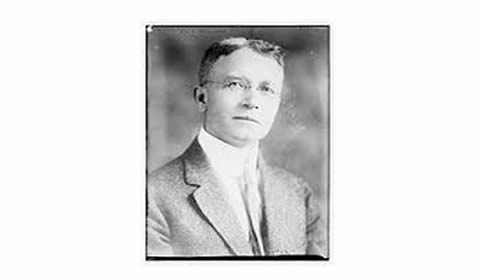


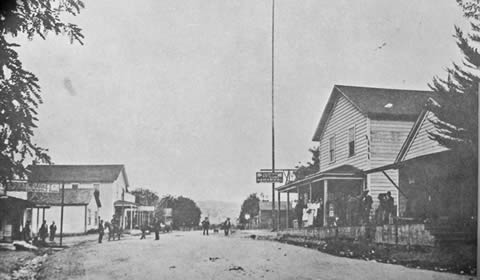
 “Hey, Bruce: Please accept this potent, blooming marijuana plant as a gift from a fan of the old school of combative journalism, but a donor who wishes to remain anonymous. It has the potential to inseminate every outdoor female marijuana plant within the radius of ten miles, at least, depending upon the prevailing winds. I encourage you to grow it in your garden. Properly nourished and cared for, cannabis can become a perennial. In West Virginia there are stands of it that are 14-18 feet high, some stalks being over twenty inches in diameter. If the local dopester/gangsta/hats-on-backwards crowd flatten your tires, or threaten to cut your beloved male marijuana plant down, whining that you are ‘ruining’ their crops by turning their sensemilla (sic) into seed-bushes, you can fight back and inform your readers that you are doing the locals a favor — seeded weed is better for you if you put it in a blender and eat it than if you smoke it! Besides, scads of these 215-ers are — let’s tell it like it is — lazy lotus eaters who should get real jobs. Hemp liberation will not be accomplished until the Eel and the Navarro and the Russian River banks are covered with hemp. GROW IT! Signed Anonymous.”
“Hey, Bruce: Please accept this potent, blooming marijuana plant as a gift from a fan of the old school of combative journalism, but a donor who wishes to remain anonymous. It has the potential to inseminate every outdoor female marijuana plant within the radius of ten miles, at least, depending upon the prevailing winds. I encourage you to grow it in your garden. Properly nourished and cared for, cannabis can become a perennial. In West Virginia there are stands of it that are 14-18 feet high, some stalks being over twenty inches in diameter. If the local dopester/gangsta/hats-on-backwards crowd flatten your tires, or threaten to cut your beloved male marijuana plant down, whining that you are ‘ruining’ their crops by turning their sensemilla (sic) into seed-bushes, you can fight back and inform your readers that you are doing the locals a favor — seeded weed is better for you if you put it in a blender and eat it than if you smoke it! Besides, scads of these 215-ers are — let’s tell it like it is — lazy lotus eaters who should get real jobs. Hemp liberation will not be accomplished until the Eel and the Navarro and the Russian River banks are covered with hemp. GROW IT! Signed Anonymous.”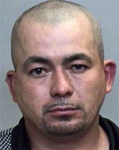
 ANOTHER ARGUMENT for the new Courthouse emphasized by the rubes is handicapped access. “O the poor dears. They have such a terrible time getting up to the courtrooms upstairs.” As if lifting a wheelchair-bound person up to the third floor of the present building is completely beyond all known engineering abilities.
ANOTHER ARGUMENT for the new Courthouse emphasized by the rubes is handicapped access. “O the poor dears. They have such a terrible time getting up to the courtrooms upstairs.” As if lifting a wheelchair-bound person up to the third floor of the present building is completely beyond all known engineering abilities.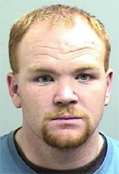
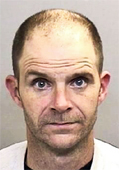

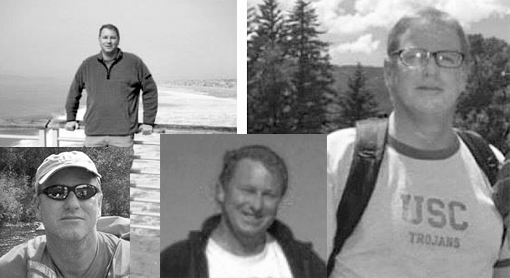

 ON MONDAY, JUNE 10, from 7-9pm two of the most articulate opponents of the Willits Bypass will take their roadshow to the Boonville Firehouse in downtown Boonville with a presentation called “In Defense of Little Lake Valley: Stories From The Campaign to Stop The Caltrans Bypass.” Scheduled guests are Amanda “Warbler” Senseman, AVA contributor and Bypass protester/tree sitter Will Parrish, plus a showing of the fine local documentary “How Caltrans Sold the Willits Bypass.” Will Parrish writes, “In Willits, the California Department of Transportation is in the process of paving paradise to put up an unnecessary freeway. It is arguably the most destructive development project to occur in Mendocino County in decades. It would cost more than $300 million and destroy the largest area of wetlands of any Northern California project in the past half-century, while doing remarkably little to alleviate in-town traffic congestion. Learn about the Bypass from people who have been on the frontlines working to stop it, and also learn how you can be involved.” (Sponsored by: Little Lake Valley Defenders.)
ON MONDAY, JUNE 10, from 7-9pm two of the most articulate opponents of the Willits Bypass will take their roadshow to the Boonville Firehouse in downtown Boonville with a presentation called “In Defense of Little Lake Valley: Stories From The Campaign to Stop The Caltrans Bypass.” Scheduled guests are Amanda “Warbler” Senseman, AVA contributor and Bypass protester/tree sitter Will Parrish, plus a showing of the fine local documentary “How Caltrans Sold the Willits Bypass.” Will Parrish writes, “In Willits, the California Department of Transportation is in the process of paving paradise to put up an unnecessary freeway. It is arguably the most destructive development project to occur in Mendocino County in decades. It would cost more than $300 million and destroy the largest area of wetlands of any Northern California project in the past half-century, while doing remarkably little to alleviate in-town traffic congestion. Learn about the Bypass from people who have been on the frontlines working to stop it, and also learn how you can be involved.” (Sponsored by: Little Lake Valley Defenders.) ========================================================
========================================================
 ========================================================
========================================================
 COMING FROM the incoherent country of America where town and country have become inseparable, the towns slurbing every which way, Scotland is a revelation. Town is town, country is country, and town ends and country begins with strict borders between the two. Leaving Edinburgh’s airport and driving to my ancestral beginnings at Selkirk, a beautiful little place on a hillside, we were immediately in sheep country whose pastures were neatly marked off by ancient stone walls. Traffic was light, then non-existent when we turned off to the series of one-lane side roads that led eventually to Hoscote House where 17 of us are staying. The Mendo equivalent would be to drive to the very end of Spy Rock, ford the Eel, then drive up into the hills of Covelo, the difference being that Scotland is a much less menacing place than rural America. We even drove through a streambed at one point, making our slow way through scattering sheep and small herds of long-haired red cattle. But we didn’t get into the deep boons until after Selkirk, population 8,000 and the site of Scotland’s first king, a fine fellow by the name of Wallace who’d managed to unite the country’s medieval warring tribes, descendants of the men who’d shed their kilts, painted their balls blue, and came running out at the Romans with broad axes. The Romans enjoyed a good laugh and then cut the blue balled savages down like so many weeds. Five hundred years after the birth of Christ, and after centuries of fending off raiding parties of various nationalities and fighting constantly among themselves, Wallace got these primitive warrior clans united and re-oriented to fight the English by whom he was eventually captured, taken to London and dragged through the streets. To make sure he was dead the Brits pulled him apart, drawing and quartering as it was called. Many Americans, including me, are descended from these Scots. When the lords grabbed off miles of pasture for themselves early in the 19th century, they rounded us up and packed us off to Appalachia. My grandfather, though, made his way from Selkirk to, of all places, Honolulu, where the world’s most uptight persons, the Scots Presbyterians, were proselytizing the world’s least uptight persons, the Hawaiians. Grandad was there primarily to make money but did both. He didn’t think women should wear make-up, and everyone should spend all day Sunday in church. I met elderly people who remembered him. I remember him for rapping my knuckles with a heavy bread knife when I made an unmannerly reach across the dinner table. Locals these days seem free of the old strictures but they still commemorate ancient battles, and as one said, “These hills are all soaked in blood.” I hiked long and hard to an old Roman mile marker deep in the hills where I tried to imagine their route this far north and on into England. On some initial expeditions they marched on through on elephants accompanied by regiments of African warriors, both the elephants and Africans dumbfounding the Scots. To a Californian, 1850 is ancient history. To these people it’s yesterday. I was assured by a friend that “the scones in Scotland are the real thing, the best you’ll ever have.” Well, they invented the things and one would think. But on Day Three of this adventure the scones I’ve tried are so far inferior to the scones of Boonville I’m tempted to mail some Selkirk scones to my informant to show him how wrong he is. We could learn from these people, though. Selkirk, directly on the Scottish tourist path, maintains a public bathroom complete with an on-site attendant. It’s scrupulously clean and comes with changing rooms for families travelling with infants. The towns I’ve seen are deceptively prosperous-looking but unemployment rates exceed twenty percent and many of the shops appear to be struggling. No street people, crazed or otherwise, and every little town with a stream of any size has a streamside walk, and every little town a museum. It’s in the low 70s here, a veritable heat wave people say. The balmy days inspire some people to strip to their skivvies and sunbathe stretched out beside the road. I walked around a bend in a remote road to encounter a couple waxing their car. It would have been impertinent to ask why drive miles from the nearest town to spiff up the transportation.
COMING FROM the incoherent country of America where town and country have become inseparable, the towns slurbing every which way, Scotland is a revelation. Town is town, country is country, and town ends and country begins with strict borders between the two. Leaving Edinburgh’s airport and driving to my ancestral beginnings at Selkirk, a beautiful little place on a hillside, we were immediately in sheep country whose pastures were neatly marked off by ancient stone walls. Traffic was light, then non-existent when we turned off to the series of one-lane side roads that led eventually to Hoscote House where 17 of us are staying. The Mendo equivalent would be to drive to the very end of Spy Rock, ford the Eel, then drive up into the hills of Covelo, the difference being that Scotland is a much less menacing place than rural America. We even drove through a streambed at one point, making our slow way through scattering sheep and small herds of long-haired red cattle. But we didn’t get into the deep boons until after Selkirk, population 8,000 and the site of Scotland’s first king, a fine fellow by the name of Wallace who’d managed to unite the country’s medieval warring tribes, descendants of the men who’d shed their kilts, painted their balls blue, and came running out at the Romans with broad axes. The Romans enjoyed a good laugh and then cut the blue balled savages down like so many weeds. Five hundred years after the birth of Christ, and after centuries of fending off raiding parties of various nationalities and fighting constantly among themselves, Wallace got these primitive warrior clans united and re-oriented to fight the English by whom he was eventually captured, taken to London and dragged through the streets. To make sure he was dead the Brits pulled him apart, drawing and quartering as it was called. Many Americans, including me, are descended from these Scots. When the lords grabbed off miles of pasture for themselves early in the 19th century, they rounded us up and packed us off to Appalachia. My grandfather, though, made his way from Selkirk to, of all places, Honolulu, where the world’s most uptight persons, the Scots Presbyterians, were proselytizing the world’s least uptight persons, the Hawaiians. Grandad was there primarily to make money but did both. He didn’t think women should wear make-up, and everyone should spend all day Sunday in church. I met elderly people who remembered him. I remember him for rapping my knuckles with a heavy bread knife when I made an unmannerly reach across the dinner table. Locals these days seem free of the old strictures but they still commemorate ancient battles, and as one said, “These hills are all soaked in blood.” I hiked long and hard to an old Roman mile marker deep in the hills where I tried to imagine their route this far north and on into England. On some initial expeditions they marched on through on elephants accompanied by regiments of African warriors, both the elephants and Africans dumbfounding the Scots. To a Californian, 1850 is ancient history. To these people it’s yesterday. I was assured by a friend that “the scones in Scotland are the real thing, the best you’ll ever have.” Well, they invented the things and one would think. But on Day Three of this adventure the scones I’ve tried are so far inferior to the scones of Boonville I’m tempted to mail some Selkirk scones to my informant to show him how wrong he is. We could learn from these people, though. Selkirk, directly on the Scottish tourist path, maintains a public bathroom complete with an on-site attendant. It’s scrupulously clean and comes with changing rooms for families travelling with infants. The towns I’ve seen are deceptively prosperous-looking but unemployment rates exceed twenty percent and many of the shops appear to be struggling. No street people, crazed or otherwise, and every little town with a stream of any size has a streamside walk, and every little town a museum. It’s in the low 70s here, a veritable heat wave people say. The balmy days inspire some people to strip to their skivvies and sunbathe stretched out beside the road. I walked around a bend in a remote road to encounter a couple waxing their car. It would have been impertinent to ask why drive miles from the nearest town to spiff up the transportation.

